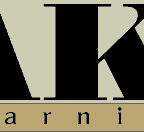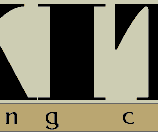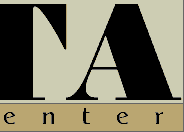 Save this page (40 kb)
Save this page (40 kb)
Has The Akita Dog Been Restored (Resurrected)?
Part 1
By Mutsuo Okada
AIKEN NO TOMO pp. 429-431 June 1998, Seibundo Shinkosha, Tokyo
The Akita dog is the only Japanese dog in the large Japanese dog category remaining today and the first Japanese dog breed that was designated as a natural monument. However, as the title of this article indicates, while the descriptions for other Japanese dogs (in the medium and small classes) were, in general, able to begin with the phrase, "preservation of purity," the less fortunate Akita dog had to begin with the phrase, "restoration toward purity." Why was this so?
Dogfighting was popular in the Akita ( Northern Honshu ) and Tosa ( in Shikoku ) regions of Japan . As dogfighting popularity increased, larger and more powerful dogs were continually being sought. After Japan reopened her doors to the rest of the world during the Meiji Period (1868-1912), fighting dog fans in Tosa began to outcross to dogs from foreign countries to rapidly improve the structure and fighting abilities of the Tosa ( Shikoku . Kochi ) dog. They eventually produced the Tosa fighting dog. During the Taisho Period (1912-1926), a Tosa fighting dog team toured Akita and soundly defeated the local Akita dogs. In an effort to regain superiority, some of the Akita dog fans took this opportunity to outcross their Akita dogs to the Tosa fighting dogs. This resulted in significant physical changes to the structure and conformation of the original Akita dog. These dogs came to be known as the "Shin Akita (New Akita)."
An excellent representative of this so-called "new" type of Akita dog was Dateisami-go (also known as Gamata-go ) (photograph 1). Dateisami-go is said to have had a height of about 2 shaku 2 sun (69.7 cm /27.4 inches). He became the grand champion of the "New Akitas." However, when Dateisami-go was defeated by Amagizan (photograph 2) of Tosa, many Akita dog fans came to the conclusion that Tosa produced better fighting dogs after all.
 Others were disappointed to see the decline in the original type of Akita dog due to the great popularity of the so-called "New Akitas" Among these was Mr. Shigeie Izumi (the mayor of Odate at that time) (photograph 3) who later became the first chairman of the Akitainu Hozonkai (Akiho). At the same time, Mr. Kokichi (Hirokichi, Hiroyoshi, pen name: Hiroshi) Saito of Tokyo organized the Nipponinu Hozonkai (Nippo) (The Society For The Preservation of The Japanese Dogs) and toured the nation. While searching for representative examples of Japanese dogs in Odate, he met and developed a close friendship with Mr. Izumi and they decided to work together to preserve the original type of the Akita dog. If this meeting hadn't occurred or if it had been delayed, the resurrection and restoration of the Akita dog probably would not have been possible.
Others were disappointed to see the decline in the original type of Akita dog due to the great popularity of the so-called "New Akitas" Among these was Mr. Shigeie Izumi (the mayor of Odate at that time) (photograph 3) who later became the first chairman of the Akitainu Hozonkai (Akiho). At the same time, Mr. Kokichi (Hirokichi, Hiroyoshi, pen name: Hiroshi) Saito of Tokyo organized the Nipponinu Hozonkai (Nippo) (The Society For The Preservation of The Japanese Dogs) and toured the nation. While searching for representative examples of Japanese dogs in Odate, he met and developed a close friendship with Mr. Izumi and they decided to work together to preserve the original type of the Akita dog. If this meeting hadn't occurred or if it had been delayed, the resurrection and restoration of the Akita dog probably would not have been possible.
The next question raised by Mr. Saito and Mr. Izumi was, "What did the native Akita dog look like?" Only a few photographs and limited research data on these dogs was available. Recollections told by the elderly were probably not the most reliable source of factual information.
The few available photographs, said to be excellent examples of Japanese dogs, were of Maru-go (photograph 5), Oyajiro-go (photograph 6) and of two dogs facing each other (photograph 7) that were raised under the loving care of Mr. Hyoemon Kyono of Yuzawa (photograph 8). These photographs seem to indicate that similar Japanese dogs seen almost trhought Japan in those days were not much larger than these dogs. Mr. Kokichi (Hirokichi) Saito's careful studies on archeological findings led him to conclude that Akita dogs more than 2 shaku (60.6 cm / 23.9 inches) in height probably did not exist in Japan.
The dogs shown in photograph 7 were not obtained until about 1919 (the eighth year of Taisho) by the wealthy Mr. Hyoemon Kyono of Yuzawa in Akita . Mr. Kyono worried about the disappearance of native Japanese dogs and sent scouts throughout Akita searching for such Japanese dogs. Although the dogs in these pictures were recognized as having the most features of Japanese dogs, they were barely 2 shaku (60.6 cm / 23.9 inches) tall. Mr. Kyono, who was involved with Japanese dogs since his childhood days, told me that he cannot recall seeing any native Akita dogs that were larger than these dogs.
Like relentless waves, Tosa fighting dogs, the result of outcrossing of many different dog breeds, significantly altered the conformation of native dog breeds such as the Akita dog.
The size of the Akita dog was increased and its fighting ability was improved while the appearance of the Akita dog changed greatly, the result of which were dogs that closely resembled the Dateisami type.
During the Showa Period (1926-1989), voices began to raise the alarm to preserve Japanese dogs. Due to the efforts of Dr. Tokio Kaburagi (photograph 9), and in spite of the less than desirable conformation of Akita dogs seen during this time, the Akita dog was declared a natural monument. This was done with much anticipation of restoring the Akita dog in the future. Although the movement toward restoration soon gained in momentum, on of the greatest problems at the beginning was that Akita dogs with standing ears and curled tails were almost never seen on city streets.
Nippo's standard for the large Japanese dog was set at 2 shaku (60-6 cm / 23.9 inches) or more. However, many large dogs of that time had droopy ears. On the other hand, dogs with standing ears often lacked the required height. Early Akita dog fanciers were faced with many such great obstacles. To obtain a Japanese type dog with standing ears, bloodlines of the few surviving native dogs called the matagi dogs from the remote mountainous areas were introduced with promising results. However, increases in purity were not necessarily accompanied by increases in size.
However, history has shown that progress was made in spite of great difficulties. During this critical period in history, Tora-go of Ichinoseki (sire: Kin-go , dam: Tama-go ), a dog that is now considered as the ancestor of the Akita dogs seen in Japan today, began to be used for breeding. His large size of 2 shaku 3 sun (69.7 cm / 27.4 inches) raised the eyebrows of those who were accustomed to seeing Japanese dogs that were less than 2 shaku (60.6 cm / 23.0 inches). Tora-go is seen in photograph 10.
Mr. Kuniro Ichinoseki was a large landowner who lived on the outskirts of Odate. He used Tora-go widely for breeding. Tora-go's bloodline, through his dam, Tama-go, can be traced back to Dateisaini-go (Gamata-go) via Aka-Nidai-Osunaizan. Offspring of Tora-go won many awards at Nippo dog shows. Many of today's Akita dogs are his descendants and can be traced back to the immediate postwar period. Many of the bitches bred Tora-go were regional dogs. Generation after generation of related bloodlines of these regional dogs were used on the road toward restoration. Thus, Tora-go was an important Akita dog during the restoration and produced some excellent offspring.
In Odate, by outcrossing to the Hokkaido dog, Kimura Kuro (photograph 11), one was able to produce Akita dogs with standing ears. Mr. Kokichi Saito also advised Mr. Yaichiro Tayama (photograph 12) to breed the Ani matagi dog, Maru-go (photograph 5) to an Akita dog. Mr. Yaichiro Tayama (photograph 12) bemoaned the fact that initially his Akita dogs were not producing any dogs with standing ears. Later, although all of the resulting litters had standing ears, the size of the dogs remained inadequate.
Meanwhile, Mr. Kyono of Yuzawa, who by this time had become one of the leaders of Nippo, personally went looking for "pure" Japanese dogs in remote mountain areas. He was finally able to find the famous male matagi dog, Oyajiro-go (photograph 6) (known also as Yoichi-no-Shiro) that was 1 shaku 9 sun (57.6 cm / 22.7 inches) tall in Sawauchi Village in Kaga county in Iawate prefecture near the borders of Akita. Oyajiro-go was brought to Mr. Kyono's Akita Nikkei Kennel and bred with dogs of the bloodlines of Tora-go of Ichinoseki and Tenryu-go (known also as Tatsu-go) (photograph 13) (sire: Tora, dam: Saiken) in an effort to produce larger dogs for the Akita Nikkei line.
As to his earlier opinion on the large Japanese dog, Mr. Kokichi (Hirokichi) Saito stated that "Since we had to start with impure dogs, we could use any dog to increase the size to 2 shaku (60.6 cm / 23.9 inches) or more. "Following Mr. Saito's advice, Mr. Takeo Sato, a dog trader, without using any of the bloodlines from Odate, produced Tachi-go (photograph 16) and Mutsu-go (photograph 15). (By the way, Mr. Sato is the model for the character of the dog trader in the story, Inu-danna ( The Dog Master ) by the famous writer, Mr. Keitaro Kondo ). These dogs became winners at Nippo's dog shows. Although the grandparents of both dogs are unknown,, according to my personal sources, Tachi-go's sire, Kappei-go (photograph 16), was the result of breeding a Hokkaido dog to a German Shepherd Dog . Since I have already discussed this in one of my previous articles, my discussion here on this topic will be brief. The dam of Dewa-go decended from Tachi-go . Although Tachi-go was sent to Odate for a time to accommodate breeders who wanted larger dogs, many breeders in Odate disliked his impure appearance, and omitted his name from their registration papers . Mr. Katsusuke Ishihara (photograph 17) once went so far as to say that Dewa-go (photograph 18) probably resulted from the inbreeding of Tachi-go.
Dewa-go (photograph 18) was bred and raised by a dog trader from Odate and won the top award at the Tenth National Nippo Show in 1942 (the seventeenth year of Showa). Dewa-go was widely used for a breeding foundation of the Dewa line. Mutsu-go is also included in the Dewa line.
With the coming of air raids to the homeland, the war soon reached a critical stage. After the Eleventh Nippo Headquarters Show in which Hayakaze-go (photograph 19) from Nagano was the winner, Nippo suspended its activities and newletters. In its place came a period of dog fur collection to aid the war effort. (Continued in Part 2)
Note: Translated and presented by Tatsuo Kimura with permission from Mutsuo Okada.
Edited by Rick and Namiko Greatting.
Bold prints for emphasis and italics were supplied by the translator.
Additional photographs were obtained from other sources.
Akita World, July/August 1999









